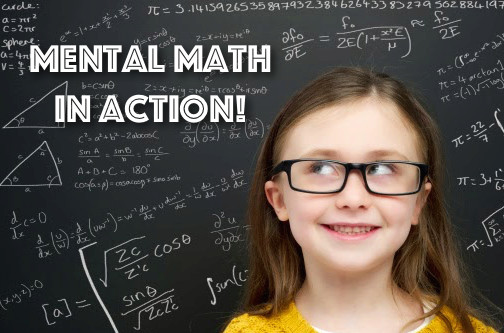
Parker, CO - Just as in the English language there exist multiple phrases to express the same concept, a mathematical problem can be approached in numerous ways. Numerical fluency is having the mathematical understanding to find the most efficient way of expressing, and then solving, a problem.
Even addition can be approached in a multitude of ways. If an addition fact has not been memorized, many students will compute the answer counting by ones. While this strategy works when performed correctly, more efficient techniques exist, such as decomposing to form a complement of 10. Take the example of 8 + 7. If the fact is not immediately known to be 15, it can be thought of as 8 + 2 + 5, or 10 + 5.
We consider a student to have basic numerical fluency when they can count from any number, to any number, by any number. Numerical fluency begins with counting by ones and builds from there to counting by 2’s or 5’s to 7’s to 3 1/2’s or other mixed numbers and includes counting forward or backward.
Counting by ones is our first mathematical tool. It is an excellent first tool, however, as we move up in mathematics, counting by ones is like building a dog house with only a hammer & nails. We can master this basic tool pretty quickly and we can definitely build a dog house with just a hammer and nails. It soon becomes apparent that just a hammer and nails is not be the most efficient way to build a dog house nor will it necessarily create the strongest doghouse. If, in addition to the hammer and nails, we can use a drill, screwdriver, saw and a level, we can build a doghouse more quickly and it will be stronger.
That is why we very frequently include an assessment for numerical fluency along with our standard assessment when a child comes to our center. Our basic numerical fluency assessment looks at 10 foundational skills that form the basis for many future mathematical computations. These 10 skills include 5 pre-requisite skills: basic addition facts up to 10, decomposing single digit numbers (ie. taking the numbers from 1-10 apart into various components such as 5 is 2+3 or 4+1), doubles facts up to 24 such as 2+2=4, 5+5=10, etc., 10 plus a single digit number, and complements of 10 (8+2=10, 1+9=10, etc.).
Once these first 5 skills are mastered, a student can then utilize the remaining 5 skills: doubles +/-1, up to and over 10, how far apart, how much is left, and adding 10 first. The purpose of checking for numerical fluency and teaching the skills required to obtain fluency is to provide the student with other, more efficient tools for their tool box.
Once numerical fluency is obtained, fluency doesn’t stop with addition. As the student’s comfort level with multiplication families improves, the number 56 is no longer just 56—it is also 2*28 and 4*14, and 8*7. Armed with this understanding, a mathematical statement such as 25*16—unfriendly and often requiring pencil and paper to solve—can be rearranged as 25*4*4, or 100*4. A different route to the same answer.
Though a student may favor one technique over another, true fluency is attained once a student can identify many routes to the solution and choose the optimal one. This power of choice that numerical fluency grants makes mathematics a friendlier discipline. Instead of a single answer to be found, a math statement becomes an expression to be understood.
Written by Elise Madonna with Suzie Shride from our sister center in Littleton, CO










